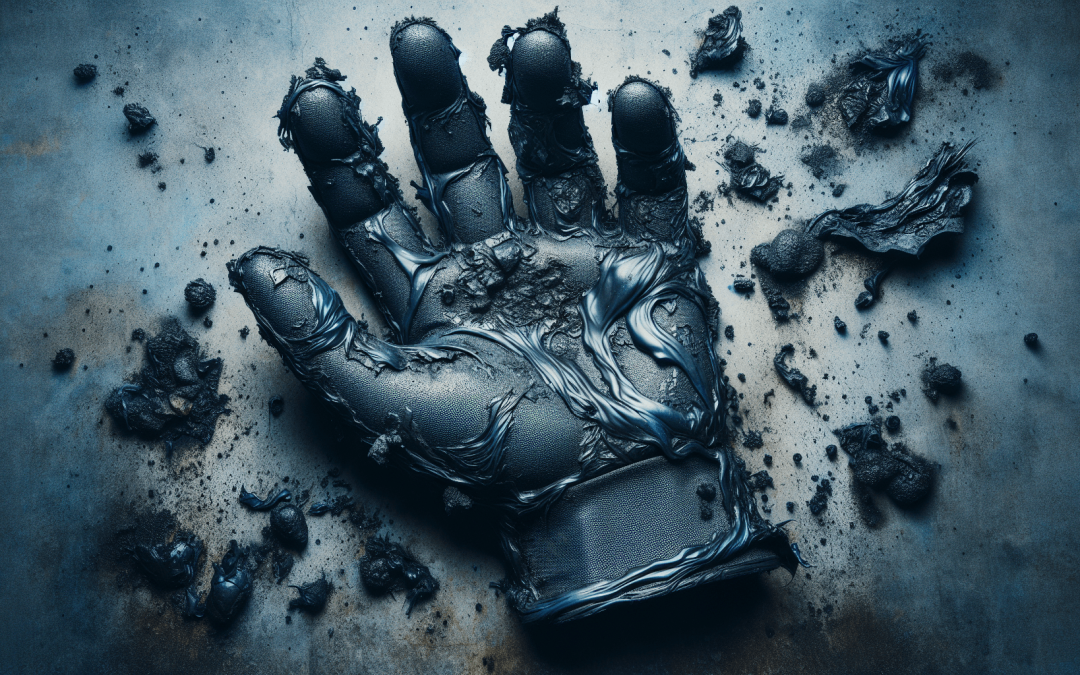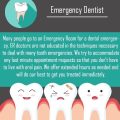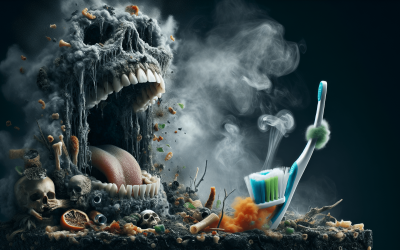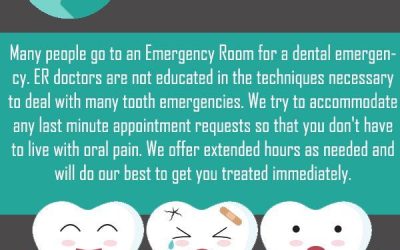So you’re working with chemicals and suddenly you feel a burning sensation on your skin. Panic sets in – is it just a minor irritation or could it be a chemical burn or injury? In this article, we’ll explore the symptoms, causes, and treatment options for chemical burns and injuries, so you can better understand what you’re dealing with and take the necessary steps to protect yourself. Whether you’re a professional handling hazardous substances or simply an accident-prone DIY enthusiast, it’s crucial to know how to identify and treat chemical burns or injuries to minimize the damage and promote faster healing.
What is a chemical burn or injury
Chemical burn or injury refers to damage that occurs when the skin or internal organs come into contact with certain chemicals. It can happen through direct exposure to a corrosive substance or through inhaling or ingesting toxic chemicals. Chemical burns can cause severe damage to the skin and underlying tissues, leading to pain, blistering, and even permanent scarring. In more severe cases, chemical burns can affect the eyes, lungs, or internal organs, causing vision problems, respiratory distress, or organ damage.
Definition of chemical burn or injury
A chemical burn or injury is defined as damage to the skin or internal organs caused by exposure to corrosive or toxic substances. Acid burns and alkali burns are the two main types of chemical burns. Acid burns typically cause coagulation necrosis, which means the cells are damaged and coagulate. Alkali burns, on the other hand, cause liquefactive necrosis, which means the affected tissues dissolve and turn into a liquid. Both types of burns can be extremely painful and cause significant tissue damage.
Common causes of chemical burns or injuries
Chemical burns or injuries can occur in various settings and situations. Some common causes include:
-
Household cleaners: Exposure to strong household cleaners, such as bleach, drain cleaners, or oven cleaners can lead to chemical burns.
-
Industrial accidents: In workplaces where workers handle hazardous chemicals, accidents can occur, causing chemical burns. Industries such as manufacturing, construction, or laboratories have a higher risk of chemical burns.
-
Chemical spills: Accidental spills of corrosive substances, such as acids or alkalis, can lead to chemical burns if not properly cleaned up.
-
Improper handling of chemicals: Improper use or storage of chemicals can increase the risk of exposure and potential burns.
-
Contact with certain plants: Some plants, like poison ivy or stinging nettles, contain toxic substances that can cause chemical burns upon contact with the skin.
Types and severity of chemical burns or injuries
Chemical burns can be categorized into different degrees or levels based on their severity:
-
First-degree burns: These are superficial burns that only affect the outermost layer of the skin, known as the epidermis. They typically cause redness, pain, and mild swelling.
-
Second-degree burns: These burns affect both the epidermis and the underlying layer of skin, called the dermis. They can cause blistering, intense pain, swelling, and redness.
-
Third-degree burns: These are the most severe type of chemical burns. They damage all layers of the skin and may even extend into the underlying tissues. Third-degree burns can cause charred or white skin, numbness, and severe pain or discomfort may be absent due to nerve damage.
The severity of a chemical burn or injury depends on various factors, including the type and concentration of the chemical, duration of exposure, and the affected area of the body.
Risk factors for chemical burns or injuries
Several factors can increase the likelihood of experiencing chemical burns or injuries. These include:
Occupations with a higher risk of chemical burns or injuries
Certain occupations put individuals at a higher risk of chemical burns or injuries. Jobs that involve working with hazardous chemicals, such as factory workers, laboratory technicians, or janitors, have a higher likelihood of exposure. Workers in industries like construction, agriculture, and metalworking may also encounter chemicals that can cause burns.
Age groups more prone to chemical burns or injuries
Younger children and older adults are more susceptible to chemical burns or injuries due to their reduced ability to recognize and respond to potential dangers. Children have a natural curiosity and are more likely to explore their environment, including substances that may cause harm. Older adults may have age-related changes in vision, coordination, or memory, making them more prone to accidents involving chemicals.
Pre-existing skin conditions and susceptibility to chemical burns or injuries
Individuals with pre-existing skin conditions, such as eczema, psoriasis, or dermatitis, may have compromised skin that is more vulnerable to chemical burns or injuries. These conditions can weaken the skin’s protective barrier, making it easier for chemicals to penetrate and damage the skin.
Symptoms and signs of chemical burns or injuries
Chemical burns or injuries can manifest in various ways, depending on the extent of the damage and the specific chemical involved. Some common symptoms and signs include:
Visible signs on the skin
Chemical burns on the skin often result in redness, pain, blistering, or even charred skin. The affected area may be swollen and tender to the touch. In some cases, the skin may appear white or waxy. The severity of the burns can vary, ranging from mild redness to deep, necrotic wounds.
Effects on the eyes, lungs, or internal organs
Chemicals, especially those in gas or vapor form, can also cause harm to the eyes, lungs, or internal organs. Exposure to toxic fumes or airborne chemicals can lead to eye irritation, redness, pain, or blurry vision. Ingestion or inhalation of chemicals can cause respiratory distress, coughing, wheezing, chest pain, and difficulty breathing. In severe cases, chemical exposure can damage internal organs, leading to cardiovascular problems, liver or kidney damage, or even death.
Delayed symptoms of chemical burns or injuries
Some symptoms of chemical burns or injuries may not manifest immediately after exposure. Delayed symptoms can occur hours or even days later and may include symptoms such as headache, dizziness, nausea, fatigue, or behavioral changes. It is important to seek medical attention if any unusual symptoms occur after exposure to chemicals, even if there are no visible signs of burns.
Immediate first aid for chemical burns or injuries
If you or someone you know experiences a chemical burn or injury, it is crucial to provide immediate first aid to minimize further damage and promote healing. Here are some important steps to take:
Important steps to take
- Move away from the source of the chemical to prevent further exposure.
- Remove contaminated clothing or jewelry that may trap the chemical against the skin.
- Rinse the affected area with cool running water for at least 20 minutes. If possible, use a gentle stream of water to avoid spreading the chemical.
- Remove any visible chemical particles from the skin while rinsing.
- Avoid applying creams, ointments, or home remedies to the burn, as they may interfere with medical treatment later.
- Cover the burned area with a clean, dry cloth or sterile dressing to protect it from infection.
Guidelines for removing the chemical
When removing a chemical from the skin, it is essential to follow specific guidelines to prevent further damage:
- Wear protective gloves or use a barrier, such as a towel, to avoid direct contact with the chemical.
- Brush off any dry chemicals before rinsing with water.
- For liquid chemicals, gently pour water over the area while avoiding splashing or spreading the chemical to unaffected areas.
- Do not use neutralizing solutions unless specifically instructed by a medical professional, as they can potentially react with certain chemicals and worsen the burn.
Precautions to avoid further damage
While providing first aid, it is crucial to take precautions to avoid further damage:
- Do not attempt to remove any clothing that is stuck to the affected area. Instead, cut around the clothing to expose the burn and seek medical help.
- Avoid applying ice, butter, or other substances to the burned area, as they may worsen the condition.
- Do not pop any blisters that may have formed, as they serve as natural protective barriers against infection.
- Provide comfort and reassurance to the person affected by the burn, as this can help reduce anxiety and stress.
When to seek medical attention
While immediate first aid is vital for chemical burns or injuries, there are specific criteria that indicate the need for immediate medical attention. It is important to be aware of these criteria and seek professional evaluation if necessary.
Criteria for immediate medical attention
You should seek medical attention if:
- The burn or injury covers a large area of the body, particularly the face, hands, feet, genitals, or major joints.
- The burn is deep, with significant tissue damage or charring.
- The burn extends to multiple layers of the skin or underlying tissues.
- There are signs of infection, such as increasing pain, redness, swelling, pus, or fever.
- The burn was caused by a strong acid or alkali.
- The burn was caused by a chemical that is known to be highly toxic or has the potential for long-term complications.
- The person affected is experiencing respiratory distress, difficulty breathing, or changes in consciousness.
Importance of professional evaluation
Seeking medical attention is crucial for proper evaluation and treatment of chemical burns or injuries. Healthcare professionals can assess the severity of the burn, monitor for potential complications, and provide appropriate medical interventions. They may also administer tetanus shots or prescribe medications to manage pain, prevent infection, or promote wound healing.
Emergency numbers and contacts
In cases of severe chemical burns or injuries, it is important to call emergency services immediately. Keep emergency numbers readily accessible and inform them about the nature and extent of the chemical exposure to ensure a prompt response.
Medical treatment for chemical burns or injuries
Medical treatment for chemical burns or injuries may vary depending on the severity of the burn, the extent of tissue damage, and the specific chemicals involved. Here are some common approaches to medical treatment:
Assessment and classification of the burn
Upon arrival at a healthcare facility, healthcare professionals will assess the chemical burn or injury to determine its severity and classification. They will examine the affected area, evaluate the depth of the burn, and identify any complications or additional injuries. This assessment helps guide the appropriate treatment plan.
Cleaning and decontamination of the affected area
Once the burn has been assessed, the healthcare team will proceed with cleaning and decontaminating the affected area. This typically involves gentle irrigation with sterile saline or a specialized solution to remove any remaining chemical residue and minimize the risk of infection. If necessary, they may also remove any damaged or dead tissue through a process called debridement.
Medication options for pain management
Chemical burns can cause significant pain and discomfort. To manage pain effectively, healthcare professionals may prescribe pain medications or administer local anesthetics to numb the affected area. They will also consider the individual’s medical history and any potential drug interactions before prescribing medication.
Wound care and dressing techniques
Proper wound care is essential for the healing process of chemical burns. Healthcare professionals will apply appropriate dressings and provide instructions on how to change them regularly. This helps prevent infection, protect the wound, and promote healing. In some cases, advanced wound care techniques, such as the use of specialized dressings or skin grafts, may be necessary for severe burns.
Complications and long-term effects of chemical burns or injuries
Chemical burns or injuries can lead to various complications and long-term effects. It is important to be aware of these potential risks and take proactive measures to prevent them.
Infection risks and prevention
Open wounds caused by chemical burns are vulnerable to infection. Bacteria or other microorganisms can enter the body through damaged skin, leading to serious infections. Following proper wound care instructions, keeping the burn clean and dry, and seeking medical attention for signs of infection can help reduce the risk of complications.
Scarring and cosmetic concerns
Chemical burns, particularly deeper burns, can lead to scarring and cosmetic concerns. The severity of scarring depends on the depth and extent of the burn, as well as individual factors such as age and skin type. Dermatological interventions, such as scar management techniques or cosmetic procedures, may be necessary to minimize the appearance of scars and improve aesthetic outcomes.
Functional impairments and disabilities
Severe chemical burns can cause significant functional impairments and disabilities. Depending on the location and extent of the burn, individuals may experience limitations in mobility, joint function, or sensory perception. Rehabilitation programs, physical therapy, and occupational therapy can help individuals regain function and adapt to these changes.
Preventing chemical burns or injuries
Prevention is key when it comes to chemical burns or injuries. By following safety protocols and guidelines, individuals can minimize the risk of exposure and potential harm. Here are some preventive measures to consider:
Follow safety protocols and guidelines
Whether at home or in the workplace, it is essential to follow safety protocols and guidelines when handling chemicals. This includes wearing appropriate protective equipment, such as gloves, goggles, or masks, and ensuring proper ventilation in areas where chemicals are used or stored.
Proper use and storage of chemicals
When using or storing chemicals, it is crucial to read and follow the instructions provided. Store chemicals in a secure area away from heat sources, open flames, or direct sunlight. Keep chemicals properly labeled and out of reach of children or unauthorized individuals.
Emergency preparedness and response training
Having adequate knowledge and training in emergency preparedness and response can significantly reduce the risk of chemical burns or injuries. Educate yourself and others on how to handle chemical spills, properly use safety equipment, and respond to emergencies. This can help minimize the impact of an accident and enable a swift and effective response.
Proactive measures for high-risk occupations
In high-risk occupations, such as those involving frequent exposure to hazardous chemicals, proactive measures should be taken to prevent chemical burns or injuries. Regular safety training, monitoring of workplace conditions, and implementation of effective safety measures, such as ventilation systems or personal protective equipment, can help minimize the risk of accidents and exposure.
Psychological impact and coping mechanisms
Chemical burns or injuries can have a significant psychological impact on individuals. Coping with the emotional trauma and adapting to changes can be challenging. However, there are strategies and support systems available to help individuals navigate these difficulties.
Emotional trauma and psychological effects
Chemical burns or injuries can cause emotional trauma, including feelings of fear, anxiety, depression, or post-traumatic stress disorder (PTSD). Individuals may experience changes in body image, self-esteem, or social functioning. Seeking professional counseling or therapy can provide valuable support in processing these emotions and developing coping mechanisms.
Support systems and counseling options
Having a strong support system is crucial for individuals recovering from chemical burns or injuries. Friends, family, or support groups can provide emotional support, practical assistance, and a sense of belonging. Additionally, counseling or therapy can help individuals develop skills and strategies to cope with the psychological effects of the trauma.
Adapting to changes and building resilience
Chemical burns or injuries may result in long-term or permanent changes, both physical and psychological. Building resilience and adapting to these changes is key in moving forward. Engaging in rehabilitation programs, setting attainable goals, and focusing on personal growth can help individuals regain their confidence and adapt to their new circumstances.
Conclusion
Awareness and prevention are paramount when it comes to chemical burns or injuries. Understanding the risks, signs, and appropriate first aid measures can significantly reduce the impact of chemical exposure. Seeking immediate medical attention when necessary and following through with proper medical treatment and long-term care is crucial for optimal recovery. By prioritizing prevention, seeking prompt medical attention, and implementing comprehensive long-term care and rehabilitation strategies, individuals can mitigate the risks and overcome the challenges associated with chemical burns or injuries.












